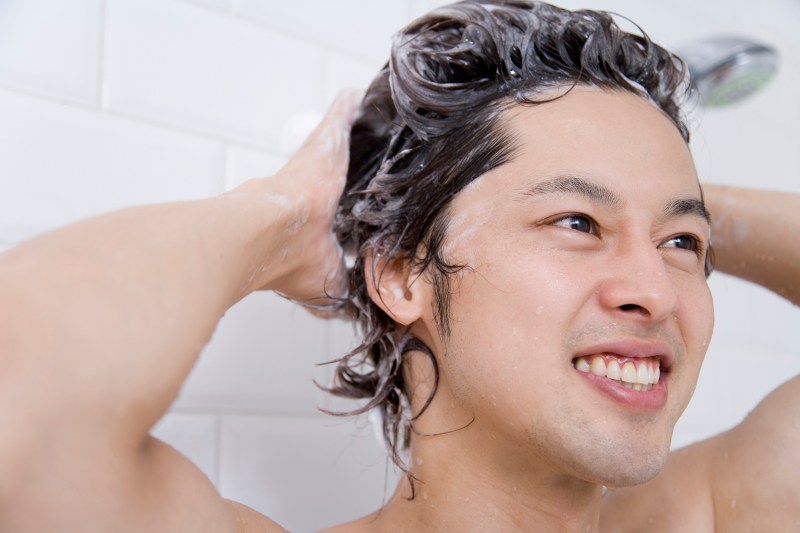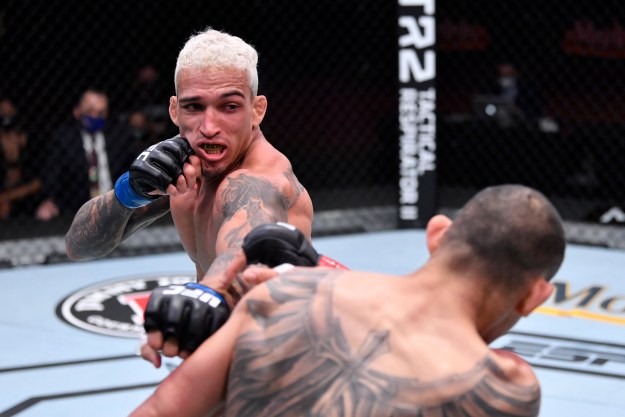
The year was 1997, I was 27 years old, and it was early on a Saturday morning in May. I was lying on my side and woke up to an uncomfortable feeling in my groin. After rolling over, I proceeded to adjust the family jewels (as most guys do multiple times daily) and felt what appeared to be a knot on my right testicle.
Being somewhat knowledgeable of my own anatomy, my first thought was, “I need to get this checked out.” However, it was the weekend and I couldn’t just call my family doctor and request a walk-in appointment. I drove across town to an urgent care center and the doctor on duty confirmed my concerns. He sent me to the emergency room where he ordered x-rays and a painful ultrasound of my testicles. If you’ve never had this done, imagine an ultrasound technician grasping your scrotum and moving the ultrasound wand back and forth across each testicle (like that region isn’t tender enough).
Then, I went back home to wait for the phone call. When it came, it was what I had initially feared. By all indication from the tests run, it appeared that I had testicular cancer. This would be one of the longest weekends of my life. Fortunately, I was able to get in to see a urologist on Monday morning. The doctor agreed with the scans and reports from the radiologist that there was indeed a mass on my testicle. He told me that we could schedule the surgery for Wednesday morning or he could do it after his office hours that evening. I opted to fast track the exploratory procedure and potential removal of the testicle versus waiting for another two days. I went to the hospital early that afternoon, was admitted, and awaited the doctor’s arrival while having chest x-rays and an MRI.
Whatever you call them — testicles, balls, nuts, cojones, family jewels, gonads — it’s important to educate ourselves about the facts of this male-only affliction.
Before 6 p.m. that evening, I was whisked down to the operating room. For those who are not squeamish here’s what the procedure entailed: a small incision was made in my lower abdominal wall and the testicle was retrieved from down inside the scrotum and pulled back out through the abdominal wall for inspection. The next thing I remember was waking up in recovery and the doctor telling me that I was all clear and that it was just a case of acute epididymitis (inflammation of the epididymis which is the coiled tube that stores and carries sperm).
A year before my scare, Lance Armstrong was diagnosed with testicular cancer that was advanced and had spread beyond the confines of his testes. Armstrong underwent a barrage of aggressive treatments and eventually was declared cancer-free. Regardless of the feelings we may have regarding his tarnished cycling history, his plight brought testicular cancer center stage. I attribute the information I obtained during his ordeal to my being aware of the signs and potential treatments.
Whatever you call them — testicles, balls, nuts, cojones, family jewels, gonads (I’m sure I could channel my inner eighth-grade self and come up with a longer list of term)s — it’s important to educate ourselves about the facts of this male-only affliction.
Dr. Paras H. Shah, MD specializes in Urologic Oncology and is the assistant professor of surgery at Albany Medical Center in Albany New York. “Testicular cancer is a relatively rare cancer in the United States,” explains Dr. Shah. “There were an estimated 9,500 new cases in 2019 which accounts for just 0.5% of all new cancer cases diagnosed in the U.S. this year. This equates to 1 in every 250 men getting testicular cancer.”
Here’s what every guy needs to know about testicular cancer.
In what age range is testicular cancer most prevalent?
“Despite its rarity, testicular cancer is the most common solid organ cancer affecting young males, specifically in the age range of 15 to 40 years old, although all age groups remain at risk, including those who are older.”
How do I check for testicular cancer?
“Testicular self-exams should be conducted while in the shower because the scrotal skin is most relaxed and thus the contours of the testicle are easily palpable and able to be discriminated from surrounding structures.

Exam one testicle at a time and in the standing position. The penis should be held out of the way and the testicle grasped with two hands. The index finger and thumb of each hand should be placed on the front of the testicle and the remainder of the fingers situated behind the testicle. This allows you to gently roll your fingers around the front and back surfaces of the testicle without the testicle ‘slipping out’ of your hands. Feel for nodules or firm irregular areas on the testicle. Try to be systematic and sweep from the top of the testicle to the bottom.
It is important to note that a rubbery lump on the top or middle back surface of the testicle is often felt and corresponds with the head of the epididymis, a C-shaped structure that cups the back surface of the testicle and stores sperm. In some cases, a cyst may form here and thus this lump is more pronounced. In fact, this is a very common reason that men see a urologist – because they are feeling a pronounced epididymis head or cyst and are concerned about a testicular lump.”
How often should I do a self-examination?
“The concept of testicular cancer screening, including through testicular self-exams, is currently debated. For example, the United States Preventative Services Task Force, an organization that assigns recommendations for screening of various malignant and non-malignant conditions based on review of the literature, recommends against testicular cancer screening. But this is due in part to the rarity of research on its clinical utility.
Other large national organizations such as that American Cancer Society recognize that routine testicular examination, not only by medical providers but also patients themselves, may be of value and thus provide instruction on how to conduct proper self-assessment. There are no formal guidelines, however, regarding how often self-examination should be conducted. I generally recommend patients inspect their testicles once a month because it’s a quick and uncomplicated exam that can be done as part of one’s daily routine (e.g. while showering).”
What do I do if I find a suspicious lump?
“If there’s concern for a suspicious lump on the testicle, it is important to seek care from a medical professional. The first step should be to call your primary care doctor so that they can independently evaluate the lump and, based on their assessment, either refer you to a urologist or obtain a scrotal ultrasound to further assess.
I have found that when patients feel something on their testicle, they reflexively engage in more frequent and often aggressive testicular self-examination – driven primarily by the anxiety of a positive physical exam finding. I would advise against this as this can make the region tender and also feed into the anxiety that ensues. This is why it is particularly important to seek medical attention when a testicular lump is suspected.”
If I’m diagnosed with testicular cancer, what’s next?
“Testicular cancer falls under the purview of urology thus if there is enough clinical concern, you will be referred to a urologist.
Testicular cancer is not generally diagnosed through biopsy but is rather based on clinical suspicion. Physical exam findings accompanied by a suspicious scrotal ultrasound are usually enough for a urologist to take a patient to the operating room for removal of the testicle, a procedure called radical orchiectomy.

Prior to surgery, the blood is tested to measure serum levels of tumor markers that are released by testicular cancer; it is important to note that normal levels of these tumor markers do not rule out the presence of testicular cancer. Additionally, prior to orchiectomy, patients should be counseled on sperm banking for fertility preservation as well as placement of testicular prosthesis at the time of orchiectomy for the purposes of cosmesis.
Removal of the testicle should not affect your fertility or testosterone production given that the other testicle is in most cases normal and assumes the function of the removed testicle. Nevertheless, sperm banking is performed as a precautionary measure as additional therapy that can harm fertility may be recommended based on the pathology of the testicular cancer and/or staging workup. This includes chemotherapy or surgical removal of retroperitoneal lymph nodes, which are performed in cases of advanced testicular cancers that have spread outside of the testicle.
Once the testicle is removed, it is sent to the pathologist for review so that not only is the presence of cancer confirmed within the testicle, but the characteristics of the cancer are delineated as this has implications for the need for further treatment. After surgery, and in many cases before, a CT of the abdomen and pelvis is performed to evaluate the status of the lymph nodes in this compartment of the body. A chest x-ray or CT of the chest will also be performed to complete the staging workup. Lastly, blood work will be obtained about two weeks after surgery to assess the levels of the tumor markers in the serum; if these markers were elevated before surgery, the urologist will want to ensure they decrease after removal of the testicle. Persistent elevation may indicate the cancer remains in the body at other sites outside of the testicle.
Based on the pathology of the testicle and the findings of the staging imaging and postoperative blood tests, the urologist will recommend either continued (and generally life-long) surveillance with blood tests and imaging or additional therapy with chemotherapy and/or surgery.”
What’s the survival rate for testicular cancer?
“Fortunately, testicular cancer is characterized by very high rates of survival, even with highly advanced forms of disease. Although the specific rates of survival vary based on the stage of the disease at time of presentation, the overall estimated 5-year survival rate for testicular cancer patients exceeds 95%. This is due in large part to the majority of individuals presenting with localized disease (e.g. that confined to the testicle) as well as significant advancements in the understanding and multimodal management of testicular cancer.
Individuals with localized disease can expect survival rates on the order of 99%, those with isolated spread to regional lymph nodes have survival rates of 95%, whereas individuals in whom the cancer has spread in a non-regional fashion to visceral sites have survival rates on the order of 80%.
In 2019, despite 9500 cases of testicular cancer diagnosis, it will account for only 400 deaths.”
Testicular Cancer Myths: True or False?
We asked Dr. Shah to help us dispel some of the common myths surrounding testicular cancer. Number two is extremely promising if ever faced with this cancer:
1. Testicular trauma (e.g. getting hit in the testicles) increases future risk for testicular cancer. “False. The only true known risk factors for testicular cancer are race, family, or personal history of testicular cancer (in opposite testicle), history of undescended testicles, and certain genetic syndromes.”
2. Removal of the testicle for testicular cancer will affect your sex life. “This is false. Testosterone production, which influences sex drive, the ability to have an erection, and semen production, are not affected as the contralateral normal testicle can assume the role of both testicles with respect to testosterone production.”
3. Removal of the testicle for testicular cancer will affect fertility. “Again, false. As is the case for testosterone, the opposite testicle can produce adequate amounts of sperm to maintain a male’s fertility. Nevertheless, sperm banking is recommended in the event additional therapies that can affect fertility is necessary for treatment of the testicular cancer. Such therapies include chemotherapy, which can have toxic effects on the sperm, or surgical removal of the abdominal lymph nodes, which can affect the nerves that support semen ejaculation.”
Editors' Recommendations
- What we know about Netflix’s Avatar: The Last Airbender
- Weed is now legal in Thailand: Here’s what you need to know
- Let’s Start the Conversation About Men’s Mental Health
- Everything You Need to Know About Jaysse Lopez and His Sneaker Resale Empire
- Everything You Need to Know About Greg Hardy Before UFC 264


